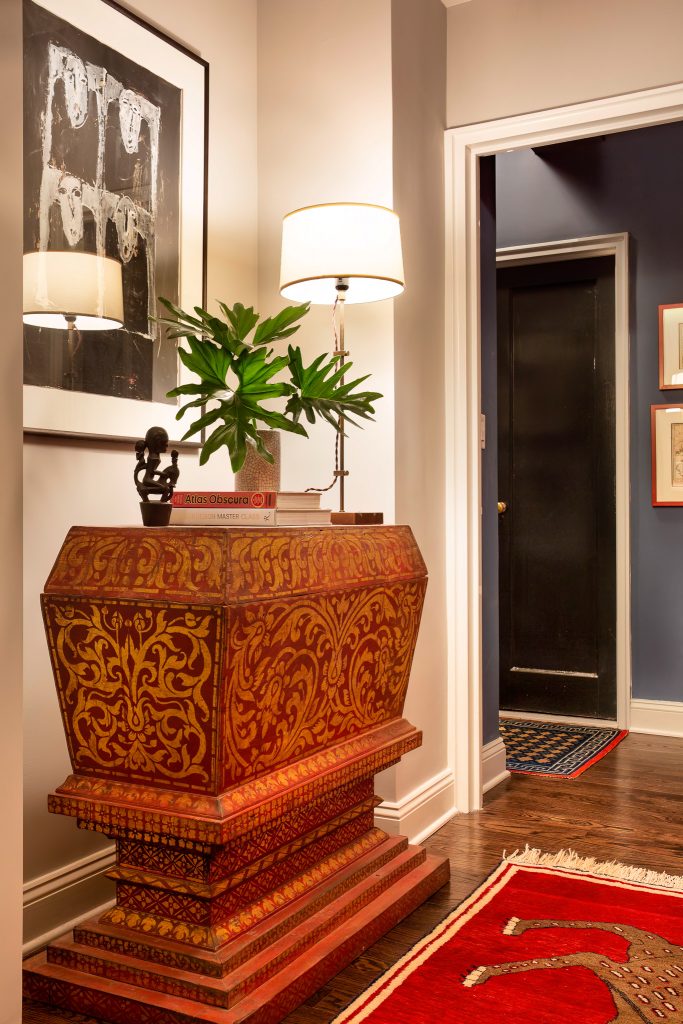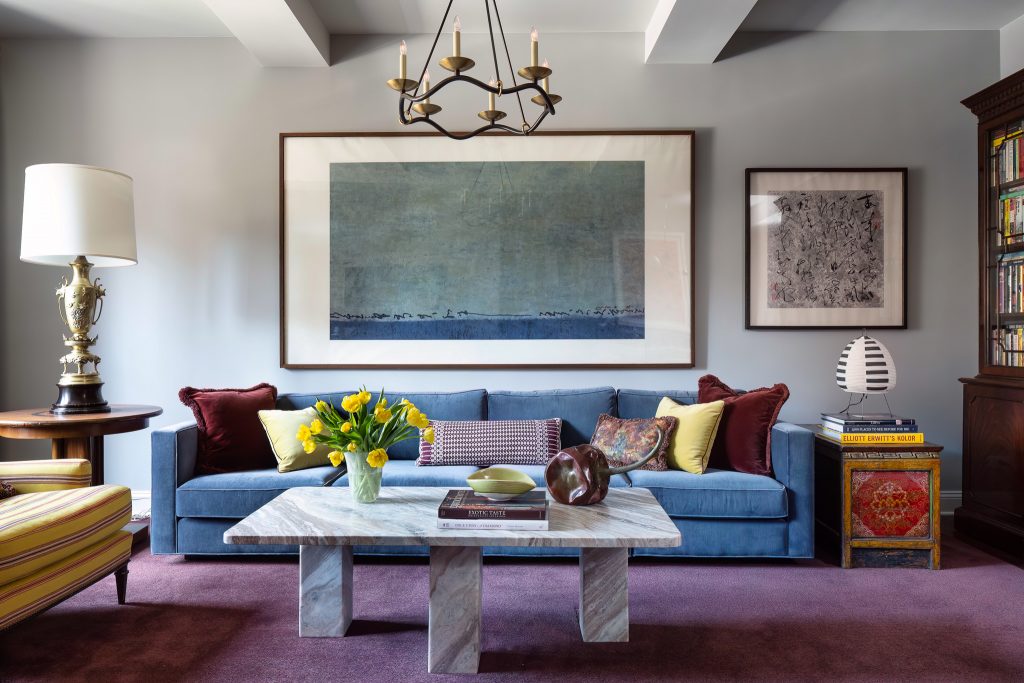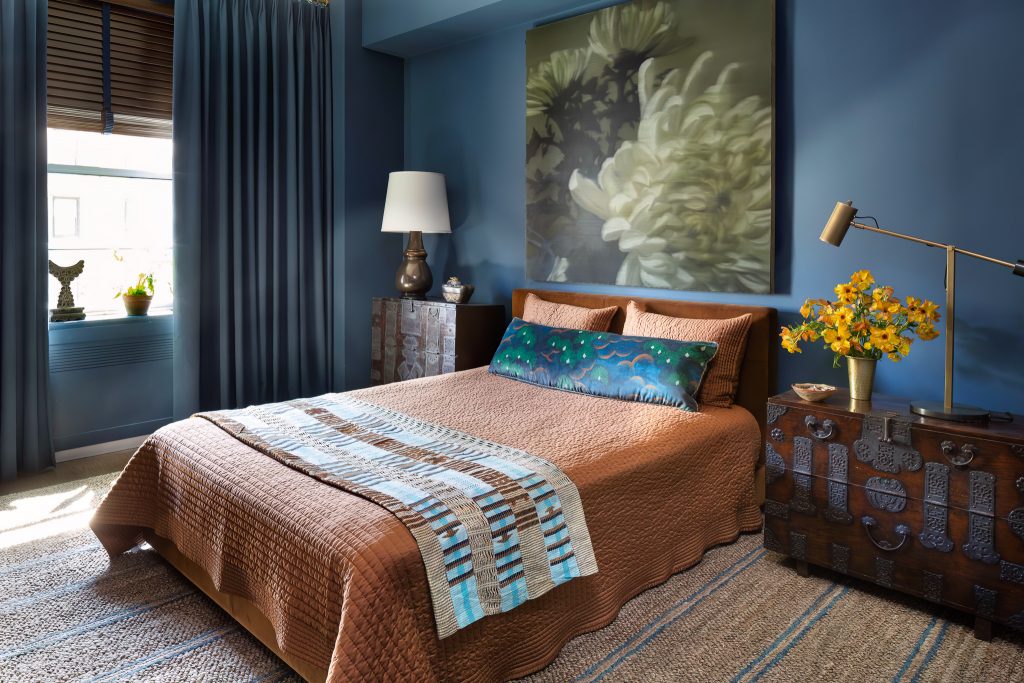
In the entryway to a collector’s apartment we designed, an arresting painted-wood Lanna Thai Buddhist manuscript holder, which once held contemplative texts, was part of the homeowner’s collection. It now provides a surface to display an ever-changing montage of books, flowers, and object d’art. The ink-on-newspaper drawing above is by the Vietnamese artist Dinh Y Nhi.
Photos by Gross & Daley
When potential clients approach us, they have ideas about how they want to live in their new (or newly renovated) home. In a series of phone calls and meetings, we work to understand that vision, paying close attention to detail.
Next, we work to discover deeper information such as specific color preferences, how they imagine entertaining guests–and how often, and their relationship with the art they already own.
This interview process is vital for understanding a client’s needs and aspirations long before we consider any structural changes to their space, furniture plans, textiles, or lighting.
Occasionally we are approached by clients who have collected furnishings, object d’art, and decorative artifacts from traveling, as was the case with our Bachelor’s Apartment. The homeowner has spent decades traversing the globe–zealously discovering and collecting from newly explored cultures. He asked that we incorporate some of his collection into our new design.
For some decorators, this creates a challenge because they strive to control the entire creative process; wherever possible, we take a more relaxed approach.
But we have been hired to give them a “new” home, not just a rearrangement of their existing furnishings, which means change. So we study existing pieces, focusing on their quality and visual interest to see where they can enhance a new scheme. We want to give clients a new home with carefully edited pieces that reflect their lives in a way that brings joy.

A Chinese scroll painted by Shanghai-born, Singapore-based artist Hong Zhu takes pride of place above an expansive four-seat sofa in the style of Jean Michel Frank, which is upholstered in lush velvet. Framed and hung in landscape format, the work creates a horizon, establishing a dialogue with the striped club chair seen to the left. The small Isamu Noguchi lamp enhances the linear motif. The Choros Chandelier, designed by Barry Goralnick, strikes a serpentine counterpoint.
Another critical consideration is the sentimentality connected to belongings. We try to be particularly sensitive to deeply personal pieces–like an object handed down through generations.
In Carl Dellatore’s book, Interior Design Master Class, I wrote about my views on design alchemy, “Alchemists have existed in every major civilization—along with great artists and artisans— all engaged in an attempt to transform base metals into gold. Similarly, a good designer possesses a knowledge of elements that, when amalgamated, create magic in an interior.”
So when a client brings objects to the table, we study them to see where we can create an alchemical spark by mixing them with newly acquired pieces–establishing a moment of excitement larger than the sum of a room’s parts.

A pair of Korean blanket chests, one taller than the other, serve as bedside tables in the primary bedroom. The walls are sheathed in muted sapphire and are complemented by the terracotta-toned pic-stitched bed cover. A seagrass area rug and a canvas by Southeast Asian artist Eric Chan anchor the room.
One final advantage to incorporating vintage and antique furnishings in a new design is that they lend a historical narrative. That has immense value because successful rooms appear collected over a lifetime of experience and adventure versus spaces that feel “placed” there on the installation day.
The intricately painted surface of a table purchased on vacation to Thailand, several toss pillows fashioned from a centuries-old Persian Suzani, or a pair of Chinese urns repurposed as lamps: these historical notes that you won’t find in a space principally populated with newly manufactured pieces.
